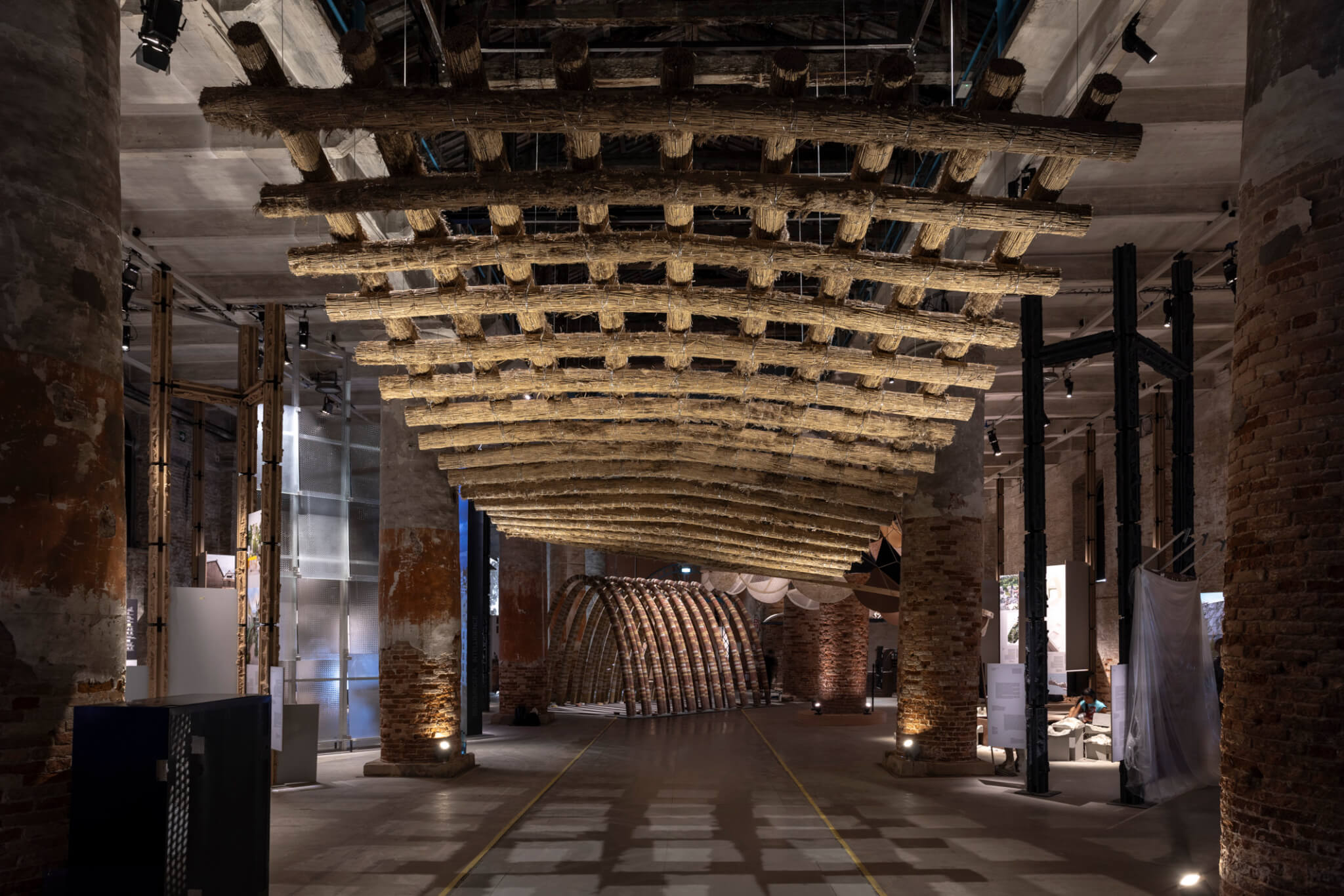Walking through the Arsenale was, simply put, one of the most spectacular architecture experiences I’ve ever had. But spectacle came with saturation. I heard electronic dance music, synthetic field recordings, AI-generated narrations, and solemn textures of tonal soundscapes, and chirping digital crickets echoed, overlapping in loops throughout the halls. The result was immersive but at times disorienting—a tangle of spatial propositions and sonic excess.
Still, beneath the sensory overload was a powerful argument. Intelligens is deliberately misspelled, its etymology combining inter-legere (to read between, the root of intelligent) and gens (people), suggesting a collective reorientation of discernment and generative capacity. Intelligence here is not just about AI, but about the necessity of regeneration as a conceptual and material response to an altered world. These conditions—climate instability, ecological depletion, the failures of extractive modernity—are systems not just to adapt to, but to actively unmake. “Adapting” is insufficient if we do so on the terms of the systems that caused the rupture.
Many of the most resonant works take up this challenge. Before New York, a project by Eric Sanderson, Lucinda Royte, Annie Fu, and Jesse Moy, reconstructs precolonial Manhattan and reflects on what was lost in the territorial erasure of land and life. Soft Infrastructure, by Jaakko Heikkilä and Emil Lyytikkä, explores common reed as a regenerative, locally available material for erosion control. Forest Gens, by POLES | Political Ecology of Space and AO | Architects Office, a cartography of Amazonia, dismantles the myth of a pristine, untouched wilderness and reveals a landscape deeply shaped by Indigenous practice. In We Are All Woven, a two-channel video installation by Fundacion Organizmo, a speaker proclaims: “My body is the first territory.… The forest must teach us to regenerate ourselves.” Perhaps most forceful is the award-winning Calculating Empires, where Kate Crawford and Vladan Joler trace a genealogy of five centuries of techno-social infrastructure that undergird colonialism, automation, and enclosure.
What threads these works together is not a fetish for solutions, but an investment in refusal, generational knowledge, and presence. As Biennale president Pietrangelo Buttafuoco writes in the Biennale’s introduction, the contemporary “is the time of divestment”—but architecture must rediscover its regenerative capacity to dwell in the world, not escape it.

This is precisely what the exhibition’s “Out” section risks forgetting. Projects speculating on habitation in space—liquid Martian skies, lunar inflatables, orbital biospheres—seem to rehearse the same logics of expansion and extraction that created the climate crisis. Rather than critiquing empire’s extraplanetary reach, they enshrine it in new frontiers. This final act feels less like cohabitation with disruption than its sublimation.
Still, Intelligens offers a critical reckoning with architecture’s role in shaping and surviving an unstable world. It acknowledges architecture’s divestment from extraction but also displays its inability to alone mitigate the crises we contend with today.
Paul Mosley is a writer, educator, and designer and an assistant professor of architecture and urban design in the College of Architecture and Environmental Design at Kent State University in Kent, Ohio.
→ Continue reading at The Architect's Newspaper
